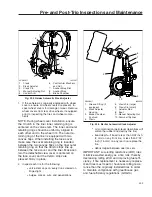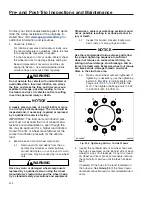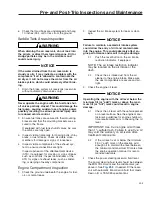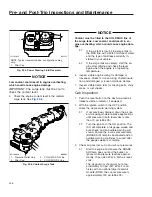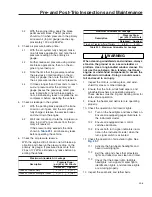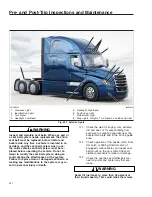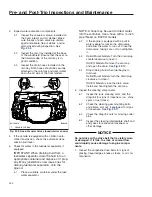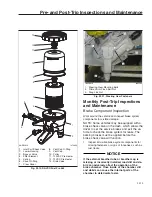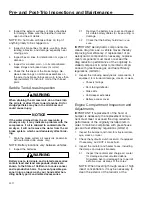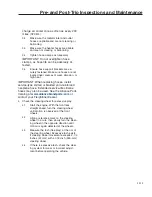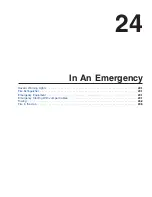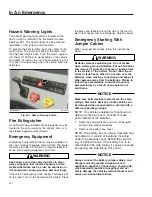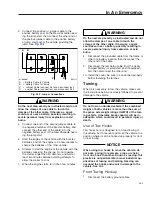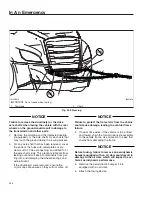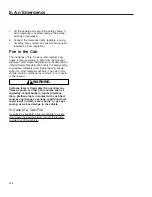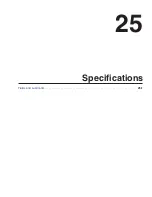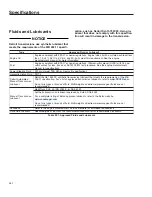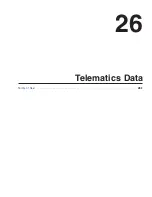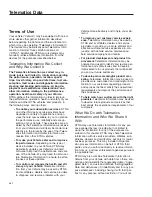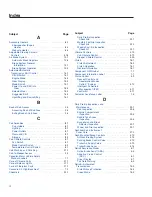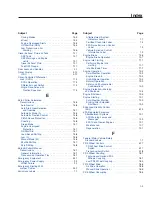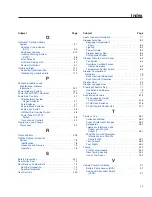
3.
Connect the positive (+) jumper cable to the
positive battery post on the New Cascadia need-
ing the jump start, then connect the other end of
the positive jumper cable to the positive battery
or jump start post of the vehicle providing the
jump. See
WARNING
Do the next step exactly as instructed and do not
allow the clamps of one cable to touch the
clamps of the other cable. Otherwise, a spark
could occur near a battery, possibly resulting in
severe personal injury from explosion or acid
burns.
4.
Connect one end of the second jumper cable to
the negative terminal of the booster battery, and
connect the other end of the cable to to the
negative battery post of the New Cascadia need-
ing the jump start.
5.
Start the engine of the vehicle with the booster
batteries, and let the engine run a few minutes to
charge the batteries of the other vehicle.
6.
Attempt to start the engine of the vehicle with the
batteries receiving the charge. Do not operate
the starter longer than 30 seconds, and wait at
least two minutes between starting attempts to
allow the starter to cool.
7.
When the engine starts, let it idle a few minutes.
WARNING
Do the next step exactly as instructed and do not
allow the clamps of one cable to touch the
clamps of the other cable. Otherwise, a spark
could occur near a battery, possibly resulting in
severe personal injury from explosion or acid
burns.
8.
Disconnect the grounded cable from the frame or
other non-battery location, then disconnect the
other end of the cable.
9.
Disconnect the remaining cable from the newly
charged battery (or jump-start post if equipped)
first, then disconnect the other end.
10. Install the cover; be sure it is positioned properly
before fastening the latches.
Towing
When it is necessary to tow the vehicle, make sure
the instructions below are closely followed to prevent
damage to the vehicle.
WARNING
Do not tow an unbraked vehicle if the combined
weight of both vehicles is more than the sum of
the gross axle weight ratings (GAWR) of the tow-
ing vehicle. Otherwise brake capacity will be in-
adequate, which could result in personal injury or
death.
Use of Tow Hooks
Tow hooks not are designed for on-road towing of
the vehicle, but to recover and move the vehicle to a
position where it can be hooked up properly for front
or rear towing.
NOTICE
When using tow hooks to move the vehicle, do
not pass a sling (for example, a rope or chain)
from one hook to another. Known as reeving, this
practice is
not
permissible in most industrial ap-
plications of towing and hoisting. Reeving can
overload the hooks and result in damage to the
vehicle. See
Front Towing Hookup
1.
Disconnect the battery ground cables.
+
−
+
−
f545111
07/06/2007
+
−
+
−
A
B
C
D
A. – Battery Cable to Vehicle
B. + Battery Cable to Vehicle
C. + Jumper Cable (connect first and disconnect last)
D. – Jumper Cable (connect last and disconnect first)
Fig. 24.2, Jumper Connections
In An Emergency
24.2
Summary of Contents for NEW CASCADIA 2016
Page 1: ... NEW CASCADIA Driver s Manual Part Number STI 500 Publication Number STI 500 8 ...
Page 5: ......
Page 11: ......
Page 38: ...f611444 10 31 2016 Fig 3 23 Sample Alert Messages Instruments 3 20 ...
Page 39: ......
Page 93: ......
Page 94: ...8 Cab and Sleeper Features Windows 8 1 Mirrors 8 1 Cab Amenities 8 1 Sleeper Amenities 8 2 ...
Page 99: ......
Page 125: ......
Page 134: ...14 Steering System Power Steering System 14 1 ...
Page 145: ......
Page 146: ...16 Manual Transmissions and Clutch Eaton Fuller Manual Transmissions 16 1 Clutch 16 1 ...
Page 149: ......
Page 150: ...17 Drive Axles Interaxle Lock Tandem Axles 17 1 Driver Controlled Differential Lock DCDL 17 2 ...
Page 164: ...19 Trailer Couplings Holland Trailer Coupling 19 1 ...
Page 177: ......
Page 191: ......
Page 198: ...25 Specifications Fluids and Lubricants 25 1 ...

